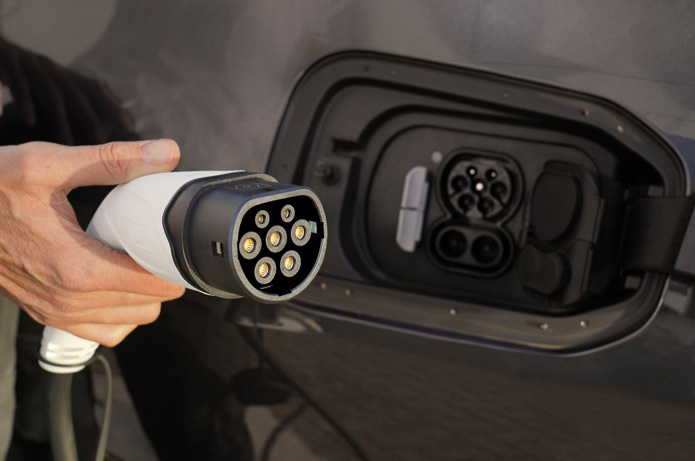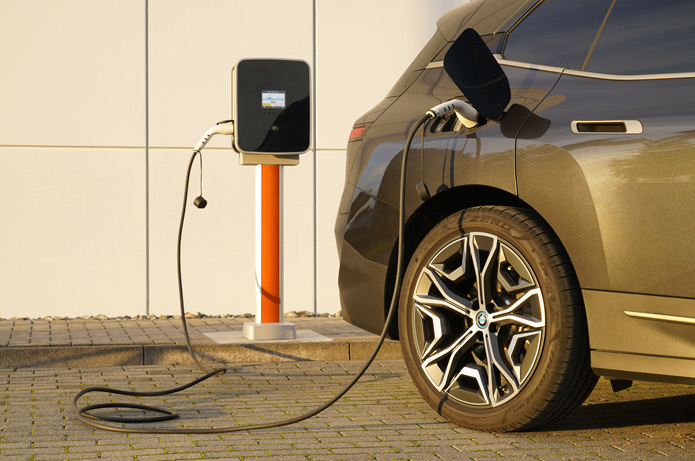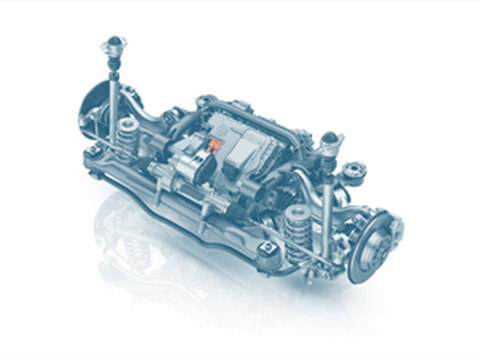Charging electric vehicles
Electric vehicle charging is a central aspect of electromobility: Electric cars rely on charging stations to recharge their batteries and extend their range.
Function
Battery electric vehicles (BEVs) are powered by batteries that are charged as and when necessary. Electric vehicles can be charged at various locations, for example at home, at public charging stations or at fast charging stations located next to motorways. When electric vehicles are charged, electrical energy is transferred from a source, such as the electric grid, to the vehicle’s battery. The energy is transferred through a plug-and-socket connection between the vehicle and the charging station. The charging time depends on various factors, such as the battery capacity, the state of charge and the charging speed.
Charging modes and connectors
The international standard IEC 62196 describes a range of charging modes and connector types. This defines four different charging modes (mode 1 to mode 4) ranging from charging with alternating current to charging with direct current. To make use of the different charging modes, it is necessary to determine which connectors are to be used at the corresponding locations.
The IEC 62196 standard governs the use of connectors according to the charging mode. The standard defines three different connection types: type 1, type 2 and type 3. Connector type 2 is now the common standard for the whole of Europe.
There is no common connector standard for mode 4 DC charging. Connector type 2 does allow for direct current charging, but only with a maximum charging power of 38 kW. Two standards have been established for direct current fast charging: CCS and CHAdeMO.
CCS (Combined Charging System):
As a rule, the only new electric vehicles to come onto the market in Germany are those with a CCS connection. The system combines a type 2 connection for charging with alternating current (AC) and additional contacts for charging with direct current, so that an electric vehicle can be charged at a CCS fast charging point with a single plug-and-socket connection. The vehicle can communicate with the charging point via the additional contacts.
CHAdeMO (Charge de Move):
CHAdeMO is a Japanese standard for charging electric vehicles with direct current (DC) and is used by some car manufacturers, especially Nissan and Mitsubishi. Unlike the CCS system, ChaDeMo uses a separate connector for charging with direct current.
Environmental protection
Electric vehicles do not emit harmful exhaust gases and therefore do not contribute to air pollution. In addition, electric vehicles can be powered by renewable energy sources such as solar energy or wind energy, leading to a further reduction in CO2 emissions. Electric vehicles can play an important role in protecting the environment and mitigating climate change.
Safety
Electric vehicle charging requires a high level of safety in order to protect both the vehicle and the environment. The plug-and-socket connections between the vehicle and the charging station must be secure so as to prevent electric shocks and short circuits. Charging stations also need to be safeguarded against vandalism to ensure they remain operational. The chargers and the power grid must also be serviced on a regular basis to ensure that electric vehicles and their batteries remain safe.




